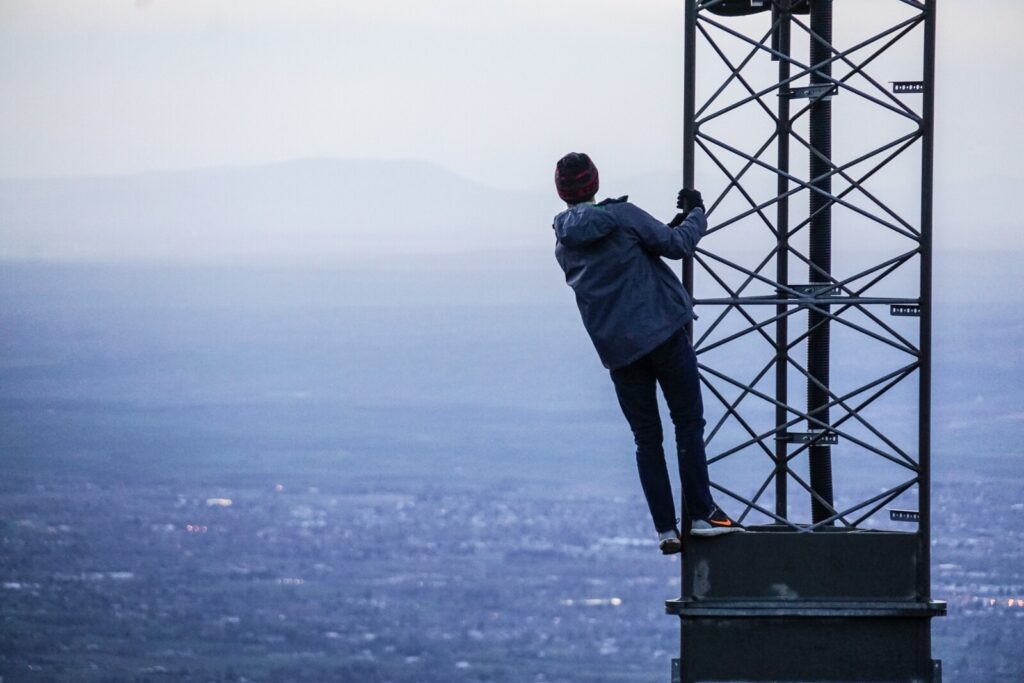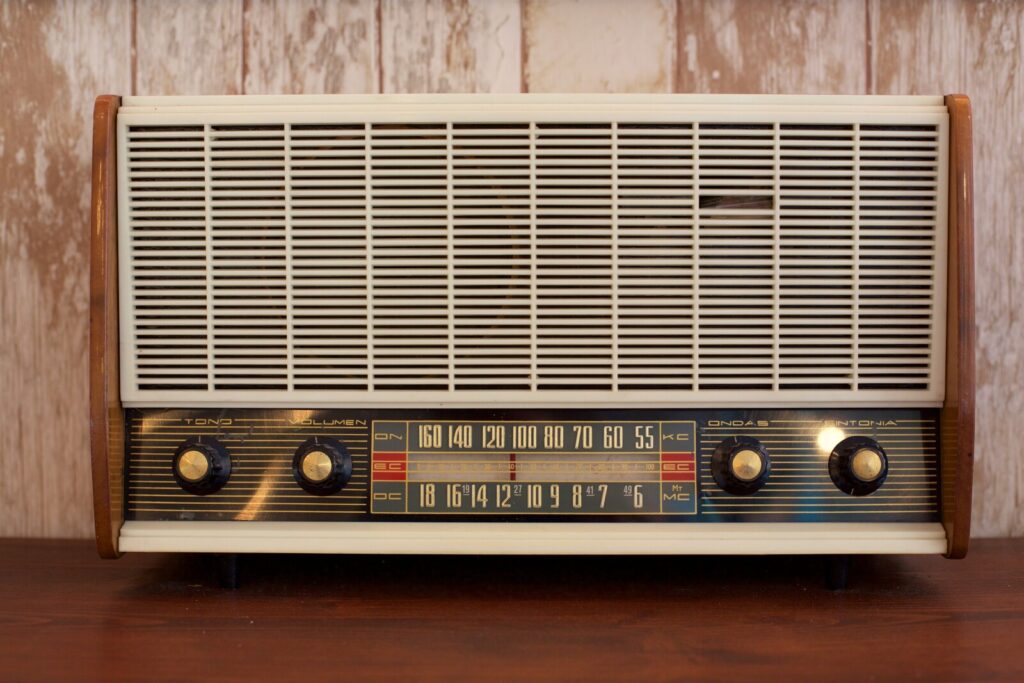
Well, well, well, look who’s ready for radio play! But that makes sense If you’re an independent artist looking expand your reach. Getting your music on the radio is a crucial step towards achieving that goal. I’m here to guide you through the ins and outs of formulating an Indie Radio Play Strategy.
Now, you might be wondering, “Why bother with radio airplay when there are so many other ways to promote my music?” And that’s a valid question. But let me tell you, radio airplay can really help to bring attention to what you are doing. Not only does it give you exposure to a wider audience, but it also adds credibility and legitimacy to your name in the industry. Plus, if you play your cards right, it can even lead to better monetization.
But how does one even go about submitting their music to radio stations? We’ll cover all of that and more in this article. From identifying who the Music Director and Program Director are to following strict sending protocols, we’ll make sure you’re equipped with all of the knowledge you’ll need to successfully submit your music to radio stations.
We’ll also dive into the different types of radio airplay and how each can benefit you. Then we’ll dive into some actionable steps to increase your chances of getting radio airplay. After all that we’ll discuss the gold that can come from forging relationships with local community radio stations.
So, get ready to take some mental notes. We’re in for a great discussion about everything it takes to develop a winning Indie Radio Play Strategy!
Why radio airplay is important for independent artists
As an independent artist, making it in the music industry can feel like an uphill battle. You have the talent, the passion, and the drive, but without the right exposure, it’s tough to stand out from the crowd. This is where radio airplay comes in – it can give you the boost you need to get noticed.
To be successful as an independent artist there are a number of skills that you need to have or to cultivate. We discuss these skills and some actionable to help you succeed with getting radio play and everything else. Check it out!
Why is radio airplay so important, you ask? Well, for starters, it can help you reach a much wider audience. When your music is played on the radio, it can be heard by thousands of listeners. These radio listeners may not have otherwise come across your work. Who knows? Maybe your song will resonate with them and they’ll become lifelong fans.
Getting your music played on the radio can also add to your credibility and legitimacy as an artist. In the competitive music industry, it can be challenging to catch the attention of music professionals. But having your work played on the radio can be a sign that you’re making progress. It demonstrates that you are taking the steps necessary that may warrant their attention.
Of course, let’s not forget about the potential for forging in roads with power players. If your music gains popularity through radio airplay, it may lead to attention from labels or music supervisors who could become interested in what you are doing.
Because, let’s face it – some people want still want a deal, right?
But, if you’re an independent artist looking to make it in the industry and stay Indie, radio airplay is still an essential tool in your arsenal. But how do you get your music on the radio in the first place?
If you’re that hardcore about doing things as an Indie; maybe you should think about starting an Indie Label. Here’s a link to an article you can read as a jumping off point. Here’s the link!
How to submit music to radio stations
Submitting your music to radio stations can seem like a big job, but fear not! With a bit of effort and some good old-fashioned persistence, you’ll be well on your way in no time.
First things first, you’ll want to identify the Music Director and Program Director of the station you’re targeting. These are the folks who have the power to put your music on the airwaves. It’s important to make sure you’re getting your music in front of the right people.
Local or college radio stations can be a great place to start. They’re often more open to playing new and independent artists. They are also more likely to have a smaller, more engaged audience that could become your fan base.
When sending your music, be sure to follow the station’s submission guidelines to the letter. Sending a giant package full of merch and a heartfelt letter may seem like a good idea, but it’s unlikely to get you very far. Stick to the protocol and be respectful of the station’s time and resources.
One tool that can be incredibly helpful is the Digital Media Distribution System (DMDS). This platform allows you to send your music directly to radio stations in a format they can use, which can save you a lot of time and hassle.
Once you’ve sent your music, follow up with a polite and professional email. This can help keep your music top of mind and show that you’re serious about getting airplay.
Remember, the music industry can be tough, but don’t give up! Keep creating, keep submitting, and keep spreading the word about your music.
Types of radio airplay and their benefits

When it comes to radio airplay, there are two main types: commercial and non-commercial. Let’s take a closer look at each and the benefits they offer independent artists.
Commercial radio:
This is what most people think of when they hear the term “radio.” Commercial radio stations are typically FM stations or satellite radio like Sirius XM. While getting played on commercial radio can be challenging for independent artists, it can lead to widespread exposure and success. A hit song played on commercial radio can launch an artist’s career, but it can be difficult to break through the noise of major label artists who dominate the airwaves.
If you are making songs that are intended for radio, It’s important to know that a hit song is usually about three minutes long. Read this guide all about what makes it true. Here’s the link!
However, there are some benefits to commercial radio play for independent artists. Commercial radio offers the potential for significant revenue through royalties, as well as the opportunity to gain new fans and expand their audience.
Non-commercial radio:
This includes web-based radio, podcasts, college radio stations, and smaller independent radio stations. Non-commercial radio may not have the same level of reach as commercial radio, but it offers a number of benefits for independent artists.
For one, it’s often easier to get played on non-commercial radio, as they are typically more open to playing independent artists and emerging talent. Non-commercial radio also allows independent artists to target more niche audiences, such as a specific genre or demographic, which can be beneficial for building a dedicated fan base.
In addition, non-commercial radio can offer the potential for commercial airplay through influential non-commercial stations. It’s worth noting that while non-commercial radio may not offer the same level of revenue as commercial radio, it can still lead to significant exposure and opportunities for independent artists.
Both commercial and non-commercial radio airplay offer unique benefits for independent artists. While commercial radio may be more difficult to break into, it can offer widespread exposure and revenue potential. Non-commercial radio may not have the same level of reach, but it offers easier access and the potential to target niche audiences and gain influential exposure.
How to increase chances of getting radio airplay
If you want to boost your radio airplay chances, you’re in luck. Here is a great list of actionable tips to improve your Indie Radio Play Strategy
1. Building an audience and credibility through other digital consumption channels:
Radio stations want to see that you have a following and that people are interested in your music. Social media platforms such as Instagram, TikTok, and Twitter are great places to build your fan base and show off your personality. By promoting your music on these channels, you’ll not only attract new listeners, but you’ll also build credibility in the eyes of the radio station.
2. Sending physical copies of music to radio stations:
While digital submissions are the norm these days, sending physical copies of your music can make a lasting impression. By adding a personal touch, your submission may stand out from the rest. Just be sure to follow the station’s guidelines for physical submissions.
3. Focusing on non-commercial radio airplay:
As we discussed, non-commercial radio stations offer easier access for emerging artists. By targeting these stations, you’ll have a higher chance of getting airplay and building a fan base. Plus, many non-commercial stations have influential DJs who can help launch your career.
4. Offering an exclusive single or EPK:
If you have a new release coming up, consider offering an exclusive single or EPK (electronic press kit) to radio stations. This can generate buzz and increase your chances of getting airplay. Just make sure the content is top-notch and showcases your unique sound.
5. Signing with a label for radio promotion:
While this may not be an option for everyone, signing with a label can give you a huge advantage when it comes to radio airplay. Labels have established relationships with radio stations and can help get your music in front of the right people.
6. Cultivating organic airplay:
Finally, don’t underestimate the power of organic airplay. Encourage your fans to request your music on their favorite radio stations, and reach out to local DJs and producers. Building relationships within the industry can help you get your foot in the door and lead to more airplay opportunities.
7. Split the work:
Boost Airplay Through Collaboration: Collaborating with fellow artists not only widens your fanbase but also enhances promotional efforts. With a collaborator, you not only have a creative partner but also a promotion partner for streamlining the workload of reaching out to radio stations.
For more about what featuring an artist is and how to arrange that. Read this!
Getting radio airplay as an independent artist can be challenging, but it’s not impossible. By building your fan base, following submission protocols, and focusing on non-commercial radio stations, you can increase your chances of getting airplay and better your Indie Radio Play Strategy.
Community radio stations and their benefits
As we’ve discussed, community radio stations are an important and often overlooked option for independent artists seeking to get their music on the air. These stations, which are typically run by volunteers and dedicated to serving their local communities, offer a unique opportunity for musicians to connect with a more niche audience.
In addition to getting radio play when you release new music there is a lot that you need to do. Here is guide all about that. Good luck!
Commitment to Local Programming
One of the main benefits of community radio stations is their commitment to local programming. Unlike commercial stations that may have a more generic playlist, community radio stations often focus on the music and culture of the surrounding area. This means that artists who are from or have ties to the community may have a better chance of getting their music played on the air.
Additionally, community radio stations tend to have a more eclectic mix of programming, which can benefit artists who don’t necessarily fit into a mainstream genre. These stations are often more willing to take risks on new and emerging artists, and may have specialty shows dedicated to specific genres or subcultures.
Making In Roads
But how do you go about getting your music played on a community radio station? As with commercial and non-commercial stations, it’s important to do your research and identify the appropriate contact person.
When reaching out to community radio stations, it’s important to emphasize your ties to the local community and how your music might be a good fit for their programming. You can also offer to do an in-studio performance or interview to help build a relationship with the station.
Be Patient
It’s also worth noting that community radio stations often have limited resources, so it’s important to be patient and understanding if you don’t hear back right away. Keep in mind that the volunteers who run these stations are often doing so in their spare time, and may not be able to respond as quickly as you’d like.
Community radio stations offer a unique and valuable opportunity for independent artists to get their music on the air and should be a part of your Indie Radio Play Strategy. By doing your research, emphasizing your ties to the local community, and being patient and understanding, you can increase your chances of getting airplay on these stations.
In addition to getting radio play you need to start thinking about making some music videos; Here is a great article to help. Check it out!
In Conclusion
Well, we’ve made it to the end of our discussion for forming your Indie Radio Play Strategy! We’ve covered a lot of ground today, from the importance of radio airplay for independent artists to the various types of radio stations and how to increase your chances of getting played.
Now, I know it may seem like a lot of work ahead, but get discouraged. With a little bit of patience, persistence, and creativity, you can make it happen.
Remember, radio airplay can be a game-changer for independent artists. It can open doors to new audiences, increase your credibility in the industry, and even lead to potential commercial success.
So keep at it, keep creating great music, and keep putting yourself out there. And who knows? Maybe one day, you’ll turn on the radio and hear your own song playing loud and clear. And when that happens, make sure to let me know so I can turn up the volume and give you a well-deserved shoutout!
Until then, stay focused, stay driven, and most importantly, stay true to your art. Good luck out there!
